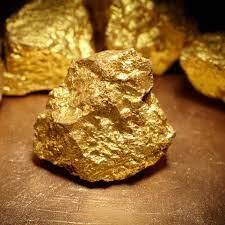From ancient times the people tried to own as much gold as possible. This precious metal often caused major wars in which tens, even hundreds of thousands of people died.
Interesting facts about gold
Paleoarchaeology claims that gold was valued during the transition from the so-called “prehistory” to the actual historical period in the evolution of mankind. The presence of written chronicles and religious monuments is considered to be the most characteristic feature of the “historical period”. And the ancient Egyptians were probably the first to start gold mining nationwide. The search for, discovery, extraction and sale of gold was a state monopoly, the violation of which was punished extremely severely. In one of the richest countries in the world, Russia, until the 1730s, gold was supplied only from abroad. The first steps in gold mining in the country were made in the Arkhangelsk region.
Gold is such a soft metal that its hardness is comparable to that of a human fingernail. One of the first to put into circulation coins of the so-called “electrum” – an alloy of silver and gold, was the Persian king Darius I, who lived in the V century BC. About a century later, Alexander the Great began minting his profile on gold coins.
The melting point of gold from the highest 999 sample is 1064 degrees Celsius. Curiously, gold has incredible plasticity – as a result of which it can be forged into sheets 0.1 micron thick (100 nanometers). At this thickness it becomes translucent.
Throughout its history, mankind has mined approximately 161,000 tons of gold.
Gold deposits have been discovered on all continents, but it is mined in only 70 countries.
It is an interesting fact that today China is a leader in gold production – over 400 tons per year. From 1840 to 2016, the annual gold production of the planet increased 100 times. It is amazing that from gold in the amount of 1 ounce (28.35 grams) you can make a wire with a length of 80 km.
The largest piece of native gold in history was found in Australia in 1872. It was a 286-kilogram quartz plate containing 90 kg of pure gold. Unbelievable, but it is a fact: more steel is cast in the world every hour than gold has been found and processed in the entire history of mankind.
The largest gold reserves are stored in the Federal Reserve Bank of New York – over 500,000 bars, which represents 25% of the world’s gold reserves.
An adult’s body contains approximately 0.2 milligrams of gold.
Only 10% of the world’s gold mining meets the needs of industry – while 90% of the metal is used to make jewelry and cast gold bars. 75% of the total weight of gold currently in circulation was mined after 1910. Aurophobia is the name of a disease that manifests itself in a pathological fear of gold and gold products.












